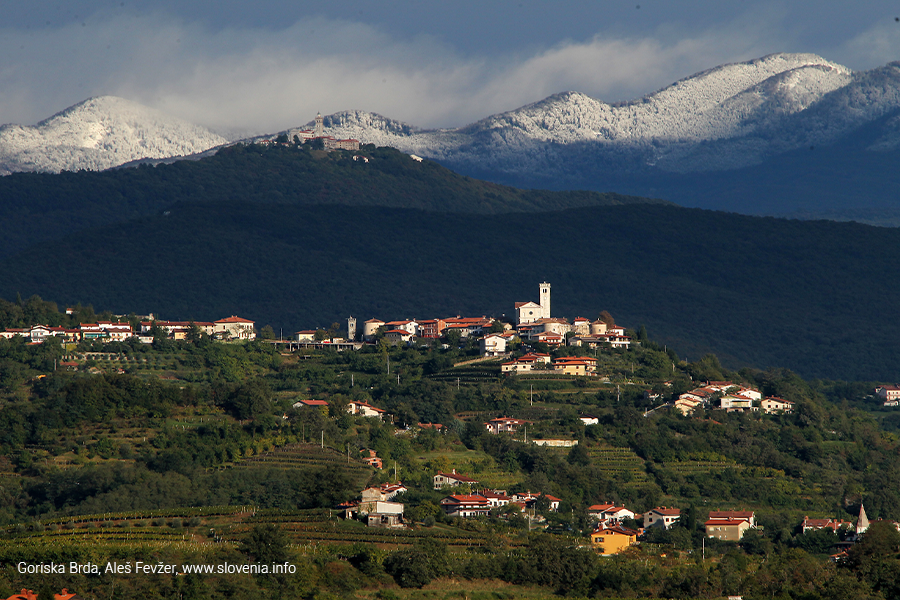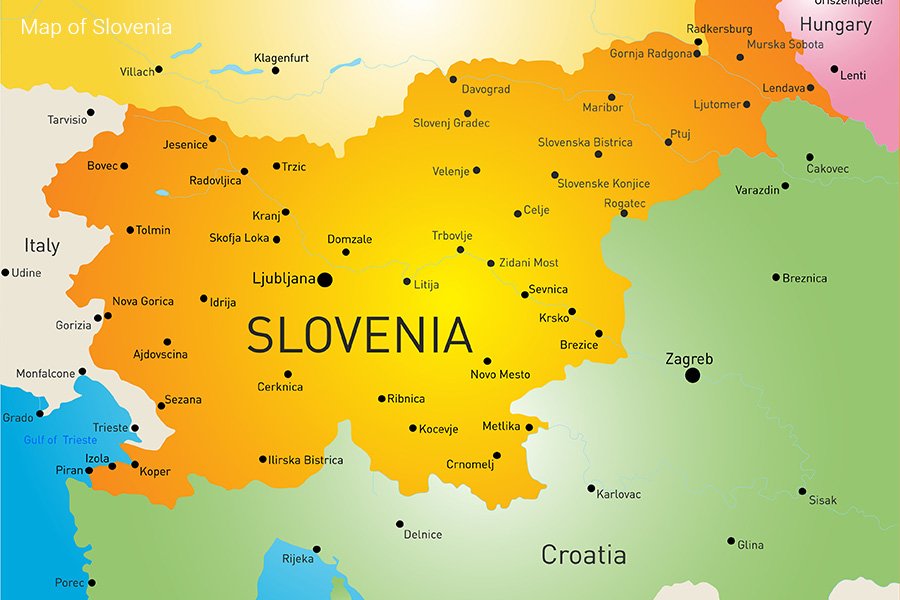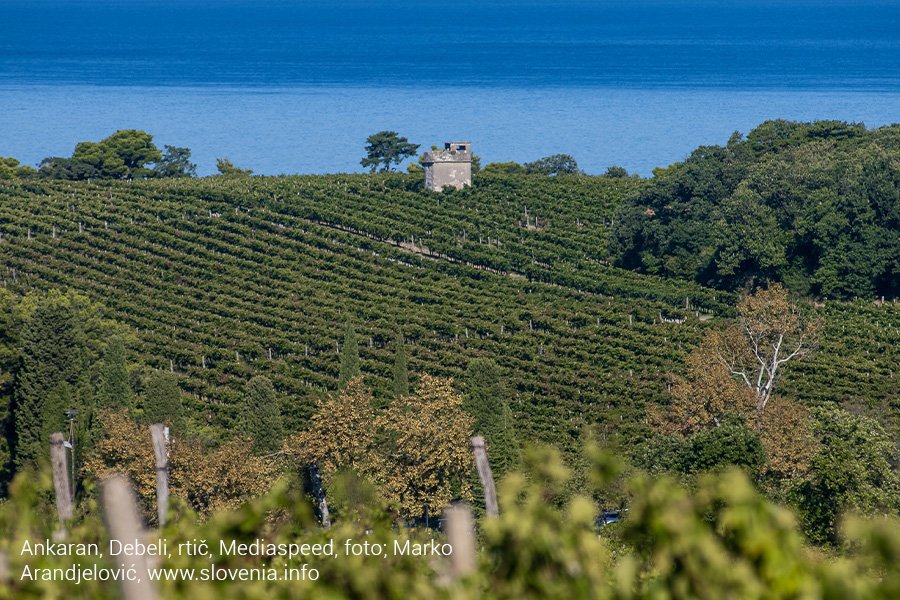
SLOVENIA’S GEOGRAPHY
SMALL BUT DIVERSE
LOCATION
Slovenia is located in Central Europe, sharing its borders with Italy to the west, Croatia to the south, Austria to the north, and Hungary to the east. Although a small country with a total area of 7,827 square miles – about the size of Massachusetts, Slovenia has an incredibly varied climate and topography.
FROM THE ALPS TO THE SEA
Four significant geographic factors profoundly influence the conditions for viticulture in Slovenia. In the northwest, the Julian Alps mark the most eastern extensions of the Alps, introducing cold influences into the region. In the southwest, the Adriatic Sea, representing the northernmost part of the Mediterranean, is pivotal in transporting warm air to the hinterland. The Dinaric mountain range emerges in the southeast, while the Pannonian Basin exerts its influence in the northeast.
Vineyards in Slovenia flourish at elevations ranging from sea level up to 600 meters. Slovenia is the 3rd most forested country in Europe. Forests cover more than 60% of the land, and its terrain is hilly or mountainous. Thus, most of Slovenia’s vineyards are on the slopes and terraces, with only 10% appearing in the flatlands. This provides optimal conditions for grape ripening and ensures effective water drainage. The challenging terrain means that mechanization in vineyard operations is seldom employed, with the vast majority of grapes being carefully harvested by hand.
SLOVENIA’S CLIMATE
Two distinct climatic conditions characterize Slovenia's wine regions. Slovenia’s eastern wine regions of Podravje and Posavje experience a cool to moderate continental climate, featuring hot summers and cold winters. The substantial diurnal temperature range during the ripening season contributes to the production of aromatic and crisp wines. Annual precipitation in these areas typically ranges from 900 to 1200 milliliters.
Conversely, in the western part of Slovenia, the Primorska wine region enjoys a moderate to warm sub-Mediterranean climate with continental influences. This unique climate is shaped by the convergence of hot air masses from the Adriatic Sea and cold winds in the Alps. Notably, the geographical proximity of a mere 140 kilometers between Slovenia's highest peak, Triglav, at 2,864 meters, and the Adriatic Sea gives rise to the well-known Burja wind. This wind can reach speeds that occasionally surpass 150 kilometers per hour. Furthermore, this region experiences higher annual rainfall, with as substantial as 1500 millimeters, particularly in districts such as the Kras, Vipava valley and Goriška Brda.
CLASSIFICATIONS
Protected Geographic Indication (PGI) – Zaščitena geografska označba (ZGO)
Slovenia has three distinct wine regions: Podravje, Posavje, and Primorska. To qualify for PGI designation, a minimum of 85% of the wine must be produced within the specific wine region.
Protected Designation of Origin (PDO) – Zaščitena označba porekla (ZOP)
Slovenia is divided into nine wine districts: Štajerska Slovenija, Prekmurje, Dolenjska, Bela Krajina, Bizeljsko Sremič, Kras, Slovenska Istra, Vipavska dolina and Goriška brda. To obtain PDO classification, 100% of the wine must be produced within the specific wine district.
Recognized Traditional Wine Style – Priznano Tradicionalno Poimenovanje (PTP)
Seven officially registered traditional wine styles are popular among the locals and found in various wine districts. These include white wines such as Bizeljčan, Belokranjec, and Ritoznojčan, as well as red wines like Bizeljčan, Metliška črnina, and Teran. Teran and Cviček are the most famous traditional wine styles throughout Slovenia.
Teran is a light to medium-bodied red wine known for its deep purple color, high acidity, and character-driven by red fruits. It is produced from the refošk grape variety, grown on the renowned terra rossa soil in the Karst wine district.
Hailing from the Dolenjska district, Cviček is unique in that it is one of the rare wines within the European Union that permits the blending of white and black grapes. This wine boasts a delicate pale ruby color and features a red berry fruit character, coupled with high acidity and a light-bodied composition. By law, Cviček is restricted to containing no more than 10% alcohol content.
SLOVENIA’S GEOLOGY
Slovenia has a 600-million-year geological history displayed in the topographical and pedological (soil) diversity. Long periods of deep and shallow seas were interchanged with continental influence and volcanic activity on the edge of ancient African and European plates. As a result, soils vary from region to region.
The bedrock in the Posavje wine region is limestone, and the topsoil varies significantly even within the districts. Sand and red-brown clays and loams are typical, flysch and marl are present, and notable outcrops of limestone may be found in the vineyards of Bela Krajina.
In the Primorska wine region, layers of clay, marl, limestone, and sandstone - known as flysch - are typical in the Vipava Valley, Goriška Brda, and Istra. The weathering of limestone and dolomite south of the Ljubljana basin formed the famous terra rossa soils of Kras.










